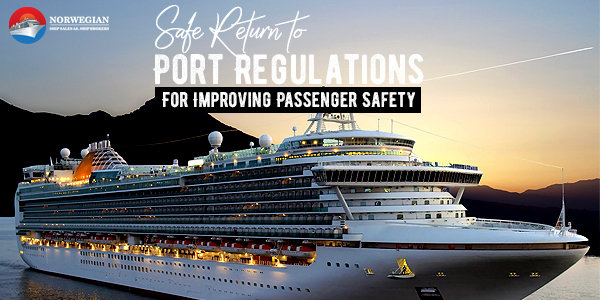To minimize the risk of a larger passenger vessel meeting with a serious accident, a new set of new regulatory improvements called Safe Return to Port (SRtP) are in force. These regulations include ways to improve the design and operations of vessels through better technology so that the stricken ship is saved and life support is provided to those on board; and in the event of the move being safe, the ship can sail to the nearest port safely with passengers and crew on board. This calls for having a certain level of system redundancy on specific ship systems.
Safe Return to Port (SRtP) refers to SOLAS regulations that became effective on 1st July 2010, and applicable to new passenger vessels having a length of 120 metres or more or with three or more vertical zones for improved survival of those onboard.
Hence in the event of fire or flood emergency, passengers and crew can remain safe on board as the vessel moves to the nearest port with its power system. This helps the crew to return to the port without any need for the passengers to evacuate the ship. This calls for designing a passenger ship that keeps the essential systems operational after a casualty, and which must not exceed the threshold limit of the casualty or flooding of any watertight compartment, while the ship can move to a safe port under the available power.
Complying to SRtP regulations put great challenges to the design of the ship. Some of the systems require to be doubled or make them secure when in damage situation. Meeting with the SRtP regulations require excellent teamwork, innovative design, modern tools, and making use of the best practices. And these developments need to be well-planned all through the life-cycle of the vessel.
A casualty threshold is defined as loss of space of the start of a fire, going up to the nearest “A” class division, provided a fixed fire-extinguishing system protects the space; or a loss of the space of origin and nearby spaces up to the “A” class divisions nearby which are separate from the original space of fire, if there is no fixed-extinguishing system protecting the space.
During the period of SRtP, people on-board should be kept in a “safe area”, where all the necessary services needed for the safety and health of the passengers are available. Safe areas are usually located internally that have all the essential services like food, water, alternative medical care, sanitation, lighting and ventilation.
Conclusion
In the event of the situation exceeding the casualty threshold, SOLAS regulations require the availability of some essential operational systems for a minimum period of three hours to help in “orderly evacuation” of the vessel, provided there is a loss of one complete fire zone.
Norship Sale is leading ferries and cruise ships brokers based in Norway. Intended buyer and seller can visit their website and select a vessel that best meets their specific needs and budget.


